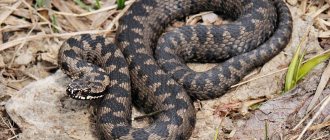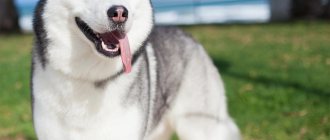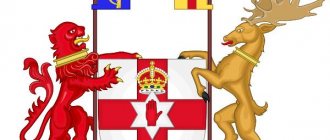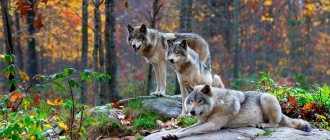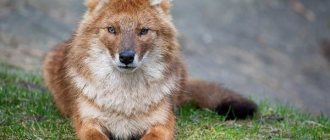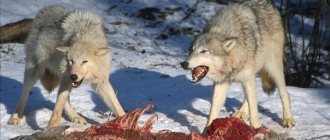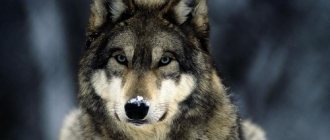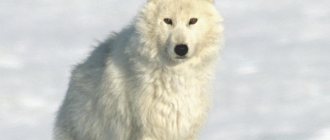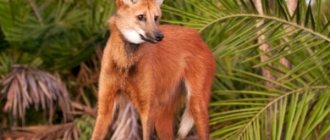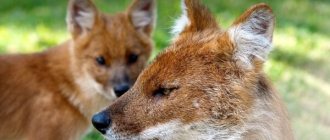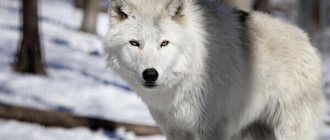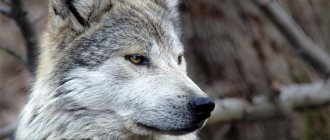Lucid dreams (LDs) have been actively studied since the last century, but various religions have been interested in them for much longer - from Hinduism and Buddhism in the East to Catholics and spiritualists in the West. What can science learn from these religious practices?
Ilya Chikunov prepared a retelling of ]]>review]]> of Brazilian scientists devoted to the study of lucid dreams in religion.
The term "lucid dreaming"
introduced by Frederick van Eeden in 1913 to ]]>describe]]> a type of sleep during which “the reintegration of mental functions is so complete that the sleeper remembers daily life and his own state, achieves perfect awareness, is able to direct attention and perform various actions, using free will." According to other definitions, an lucid dream is simply a dream when a person becomes aware that he is dreaming. The objective study of lucid dreaming began with the work of Keith Hearn and Stephen LaBerge, who developed a technique in which dreamers were instructed to move their eyes at the moment of lucidity.
Although the first scientific data appeared relatively recently, OSs have been described by various religions since ancient times. Next, we will look at how Hinduism, Buddhism, Judaism, Christianity, Islam and spiritualism interpret dreams, lucid dreams and other states of consciousness during sleep.
Steppenwolf
Much less forest-like, the coat is sparse and hard, the color along the back is rusty, more like chestnut, and the sides are pale gray. The habitat is the Russian south, which includes the steppes of the Ciscaucasia, Caspian region, Urals, and sometimes the Lower Volga region.
The species was subject to little study; they were unable to develop a concept of designated differences. In terms of species size and population, it is not very numerous, the reason is the constant regulation of the number of individuals by people.
Siberian tundra wolf
It is considered one of the large subspecies of the wolf genus. In adult individuals, the weight reaches 50 kg, the body is up to 140 cm long, females are slightly smaller. The color can change depending on the seasons and age of the individual; in winter it is often white, with black specks on the face or back.
It lives in the tundra region of Russia, among the Kola Peninsula and Kamchatka, and is found in taiga places, near the shore of the North Sea, and sometimes in Scandinavia. It does not live in one place, it moves along the tracks of its prey, for example, it wanders with reindeer.
Russian wolf
Another name is the Central Russian wolf. Lives in the northern part of Russia. His color is classic gray. The predator's weight reaches fifty-five kilograms. These are average figures, because the average weight of males can be up to 80 kilograms, and females - up to 55 kilograms. Russian wolves feed on chamois, wild boar and moose. They often have to fight bears for prey.
Caucasian wolf
Medium in size, length ranges from 85 to 90 cm, males weigh 30 kg, females 25. The skin has rough and short hair, the underfur is not sufficiently formed. The color is dominated by a dull color with a grayish, dirty tint, the hardness of the coat is higher than that of the subspecies of the north.
Outwardly close to the wolf living in the Caspian lowland, with which it is easy to confuse it. Lives among the mountainous forests of the Caucasus and Transcaucasia, northwestern Iran, and some parts of Turkey. But it is also found among the steppes, for example, in Shirak.
Wolves - guardians of the Siberian forest
Most often, stories about wolves emphasize their danger, and that meeting them does not bode well. But we will talk about something else, about the benefits of wolves, their foundations and behavior in a pack, about what unique animals they are in their behavior and significance for the world around them.
The Siberian forest wolf is one of the most important animals in the life of the taiga fauna. By choosing weak and sick victims during the hunt, he carries out selection of species, weeding out their weak individuals.
In some areas, due to the lack of wolves, more and more genetically inferior artiodactyls appear, which can lead to the extinction of the species as a whole.
Smaller scavenger predators feed on the remains of wolf food.
Wolves are also useful for humans, for example, they control the beaver population, fight packs of wild dogs, which are often carriers of rabies, and attack livestock. The wolf enters human territory extremely rarely, only in cases of very severe hunger.
7 facts about Siberian wolves
- A wolf's brain is 30% larger than a dog's;
- In the hierarchy of the pack, the character of the animal is more important than its size;
- The wool of wolves is two-layered: an undercoat that warms and a top layer that prevents the penetration of moisture and gives color;
- At birth, all wolf cubs have blue eyes, over time it becomes golden yellow;
- The wolf's speed is up to 65 km/h, jump up to 6 meters;
- In skirmishes between packs, usually only the leader is killed;
- In search of prey, the wolf travels up to 80 km per night;
- The weight of the Siberian wolf is up to 90 kg;
Hierarchy and customs of the wolf pack
The territory of a flock usually stretches for 20-50 kilometers; within their territory, animals can hunt and move freely. If they were met on their territory by another flock, then the battle cannot be avoided and is unlikely to happen without casualties.
Most often, in packs, animals help each other, no matter whether it is a young and strong animal or an old wolf. But, nevertheless, there are flocks where they get rid of weak and sick individuals in favor of the young and healthy.
The hierarchy in the wolf pack is very interesting:
The alpha male is the leader, the individual with the strongest character. The alpha determines all orders in the pack: hierarchy, hunting days, habitat, female. Most often, the Alpha male takes care of all members of the pack; during a hungry period, he can give his piece to the puppies.
Alpha female - regulates and controls the behavior of all individuals of the female field in the pack.
The Beta Male is the main warrior, most often the son of the Alpha Male and Alpha Female. He organizes habitat protection and hunting. The beta male is often bullying towards weaker individuals, thereby trying to emphasize his status.
Mother wolves are responsible for caring for their offspring; special preference for this role is given to experienced wolves, who themselves have given birth to more than one offspring. Mother wolves do not engage in hunting or fighting with neighboring packs.
Warriors are a team with which the leader goes on a hunt or battle with aggressive neighbors. Warriors are the backbone of the pack and are responsible for food and safety. Warriors can be both male and female.
Parents are the older brothers and sisters of the new litter of the pack, subordinate to the mother wolves, and help with raising the puppies.
Puppies are the youngest litter. Puppies are loved and protected by everyone, they are looked after, they get away with a lot. Even the leader treats puppies with special trepidation.
Disabled people are old people. Most often, wolves take care of such relatives, because they have faithfully served the pack all their lives. Disabled people are provided with protection and food.
It happens that the hierarchy in the pack changes slightly, and new positions appear.
Wolves are wise, careful and very organized animals. In most cases, they are not interested in the person. But we must not forget that this is a predator, and if you encounter it in the forest, it is better to leave carefully and without sudden movements. And it’s better to enjoy the beauty and grace of these animals from afar, with the help of binoculars.
https://zen.yandex.ru
https://scrollex.ru
https://simple-fauna.ru
https://poznavaemoe.ru
Red wolf
The origin is determined by scientists as a genetic cross between a gray and a red wolf. One of the endangered species, at the end of the last century it could be seen in zoos in Texas. The sizes are larger than those of the meadow wolf, the body length is 100-130 cm, males can weigh 20-40 kg.
The fur color is red, with shades of brown, the back is often black. The muzzle and limbs are reddish, the tail is black at the end. Molting occurs during the summer season.
Today people are making great efforts to preserve and return this species to the wild.
Mongolian wolf
Small wolf. Its weight reaches forty kilograms. Its color is dirty gray and its fur is hard and coarse. The subspecies lives in the east and southwest of Transbaikalia and in the Primorsky Territory. When hunting, he pursues the prey. In one night it can travel more than sixty kilometers. While stalking, wolves follow each other, stepping on the same tracks. The number of predators can only be counted when they disperse.
Canadian black wolf
Habitat only in North America. Reaches 1.5 m in length, height 80-94 cm, males weigh up to 70 kg, black in color with thick hair. Adapted to move through deep snow and live in harsh conditions.
The uniqueness of the species is that animals never forget each other; communication between them occurs with the help of marks.
Hierarchy and customs of the wolf pack
The territory of a flock usually stretches for 20-50 kilometers; within their territory, animals can hunt and move freely. If they were met on their territory by another flock, then the battle cannot be avoided and is unlikely to happen without casualties.
Most often, in packs, animals help each other, no matter whether it is a young and strong animal or an old wolf. But, nevertheless, there are flocks where they get rid of weak and sick individuals in favor of the young and healthy.
The hierarchy in the wolf pack is very interesting:
- The alpha male is the leader, the individual with the strongest character. The alpha determines all orders in the pack: hierarchy, hunting days, habitat, female. Most often, the Alpha male takes care of all members of the pack; during a hungry period, he can give his piece to the puppies.
- Alpha female - regulates and controls the behavior of all individuals of the female field in the pack.
- The Beta Male is the main warrior, most often the son of the Alpha Male and Alpha Female. He organizes habitat protection and hunting. The beta male is often bullying towards weaker individuals, thereby trying to emphasize his status.
- Mother wolves are responsible for caring for their offspring; special preference for this role is given to experienced wolves, who themselves have given birth to more than one offspring. Mother wolves do not engage in hunting or fighting with neighboring packs.
- Warriors are a team with which the leader goes on a hunt or battle with aggressive neighbors. Warriors are the backbone of the pack and are responsible for food and safety. Warriors can be both male and female.
- Parents are the older brothers and sisters of the new litter of the pack, subordinate to the mother wolves, and help with raising the puppies.
- Puppies are the youngest litter. Puppies are loved and protected by everyone, they are looked after, they get away with a lot. Even the leader treats puppies with special trepidation.
- Disabled people are old people. Most often, wolves take care of such relatives, because they have faithfully served the pack all their lives. Disabled people are provided with protection and food.
It happens that the hierarchy in the pack changes slightly, and new positions appear.
Wolves are wise, careful and very organized animals. In most cases, they are not interested in the person. But we must not forget that this is a predator, and if you encounter it in the forest, it is better to leave carefully and without sudden movements. And it’s better to enjoy the beauty and grace of these animals from afar, with the help of binoculars.
Polar arctic wolf
Lives in the Arctic region, the tundra, except for those parts where the ground is covered with ice. Body length up to 170 cm, weight 85-95 kg, white color, strong and warm wool.
It survives calmly at low temperatures for years, goes without sunlight for several months and does not eat food for weeks.
The number of Arctic polar wolves is noticeably decreasing, the reason is associated with the deterioration of the environmental situation. It is listed in the Red Book, so hunting it is strictly prohibited.
Red Wolf
It is extremely rare in terms of population and is listed in the Red Book, just like the polar one. In Russia it is under threat of extinction. In India, you can only hunt animals with a purchased license. The wolf has an unusual appearance; the features of a gray wolf, a jackal and a fox are mixed.
The length of males is 110 cm, weight 22 kg. The coat is tawny-red on the back and sides, cream-colored on the belly and lower legs. The tail is fluffy, somewhat similar to a fox, and there is a blackish pattern on the nose and near the eyes. It is found in the south of the Khabarovsk Territory, in the north of China and Mongolia, in Primorye.
Has increased endurance, chases the victim until he falls from fatigue.
All about Siberian wolves
Along with large game, small game plays an important role in the wolf’s diet. Domestic dogs sometimes become prey for wolves. Wolves are characterized by cannibalism. There are many known cases when they tore and ate their weakened relatives, wounded by hunters.
If a wolf is hungry, it can eat up to 10 kilograms of meat. However, under normal conditions, the daily requirement of an adult animal is only about 2 kilograms. This animal also has an amazing ability to starve. There is a known case when a wounded wolf lay in the Yamal tundra, without changing place or hunting, for 17 days. He lost a lot of weight, but fully recovered from his wounds and ran as if he were healthy. The wolf does not need food as much as it needs drink. In a flock chasing an elk, often some predators run on the heels of the prey, while others run across them or are cowardly, slowly and, having rested, replace the leaders. The prey is divided among the members of the pack. Wolves bite their prey to death, something only big cats can do.
The rutting season for wolves occurs in winter, in different areas of residence - from December to March. A she-wolf's pregnancy lasts 62 - 75 days. Wolf cubs are born in the spring, blind, with closed ear openings, covered with sparse brown fur. They ripen in 9-12 days. They are fed milk for a month and a half, but even before that they eat semi-digested meat regurgitated by the male, who all this time supplies the she-wolf and the cubs with food. Gradually, the wolf cubs learn to kill small animals that their parents bring to them, and learn real hunting.
In nature, wolves live up to a maximum of 15-20 years, but already at 10-12 years they show signs of old age.
Wolves are active mainly at night. They make themselves known with a loud howl. The fact is that with the help of various kinds of howls, wolves exchange information. The expressions of wolves' faces, postures and movements of the body, and the position of the tail are very diverse, which reflects the differences in the emotional state of the animals. The wolf has great strength. Without apparent difficulty he can drag a sheep in his teeth, carrying it in front of him or throwing it on his back. The wolf is extremely strong in wounds, which is why it is necessary to shoot it in the most lethal places: in the head, chest and shoulder blades. If a bullet hits a wolf in the guts, he will go far. The survivability of the wolf is amazing.
Most adult gray wolves weigh between 34 and 56 kilograms. But the wolves found in Eastern Siberia are in many ways different from the wolves of European Russia. Siberian wolves are somewhat smaller and rarely reach this size.
All animals belonging to the canine family are digitigrade, that is, they walk using only their toes.
Wolves walk, jog, skip or gallop. Their speed while walking is about six and a half kilometers per hour. A calmly walking or running wolf amazes with its ease of movement. He seems to be creeping above the ground, covering long distances without a hint of fatigue. If there are a couple or a group of wolves, then they walk in single file, stepping strictly one after the other, and only at a turn or at a resting place where the animals disperse can one determine their number.
Wolves are intelligent creatures, as evidenced by erect ears and an attentive gaze.
The long and very fluffy tail of the wolf is an anatomical feature of this animal. When going to bed at night, the wolf curls up into a ball and covers his nose and legs with his tail, which are exactly in the center of the circle. Thanks to this position of the tail, the warm air exhaled from the lungs warms the nose and paws well.
The long whiskers on the wolf's muzzle serve as olfactory organs. There are 42 teeth in the cleft palate: 12 incisors, 4 canines, 16 small molars, 10 pseudomolars and molars.
Smell plays a very important role in the life of a wolf. It has several special glands. The odors produced by these glands are as individual as our fingerprints.
Wolves can detect prey at a distance of up to 3 kilometers. When chasing prey, they keep a trail, even without being able to see it. They succeed in this thanks to the “dog’s” nose, which has such a subtle sense of smell that it is considered the best sensory organ that nature has come up with.
The wolf is gifted with excellent vision, hearing and, most importantly, sense of smell. He hears further with his nose than he can see with his eyes.
Maned wolf
Known under the names guar and aguarachai. The height of the animal is 75 cm, length 1.6 m, weight 21-23 kg. In appearance it resembles a fox, only larger in size, the fur is the same red, and the muzzle is sharp. The guara is tall among other wolves; its long legs make it possible to move through tall thickets and clearly see prey from behind them.
The habitat is most often the plains of the southern United States, but also lives in Brazil, Bolivia, Uruguay, and Paraguay. He poses no danger, he is afraid of people, avoiding all kinds of meetings.
Tasmanian marsupial wolf
The second name, the thylacine, has been officially declared extinct, but scientists recognize the possibility that there are still a few individuals left in abandoned places in Tasmania. Previously, it was considered one of the largest predators among marsupials, the total body length reached 1.5 m, weight 20-25 kg.
The last thylacine died of senility in 1936. So far, no one has managed to catch or photograph a single individual.
If the wolf wanted to yawn, his jaw opened almost 180°.
Melville Island wolf (Ellesmere wolf)
The size is slightly smaller than the common wolf, the body length varies from 91 to 180 cm, weight reaches 45 kg, larger males gain up to 80 kg.
The coat is grayish or pale white, the ears are relatively small, and help retain warmth in frosty conditions. Habitat is northern USA, 1/2 part of Greenland, people are rarely found in those places, so the animal feels free.
Canis Lupus (Grey wolf)
The largest wolf in the world, a representative of the most ancient tribe that died out during the Ice Age. But the Guinness Book of Records did not record such information. Height is 100-150 cm, there are also males with a size of 170 cm, weight in the range of 70-95 kg.
The harsher the conditions, the larger the animal becomes. Most often, such wolves prefer to settle in steppes, tundras and semi-deserts; they avoid dense forests; cases of living close to people are not uncommon.
Capable of running at a tremendous speed of 60 km/h, he alone can easily run down a victim.
Wolf and its subspecies
Ancestors of dogs.
Wolves have lived on Earth for more than a million years. They originated from carnivorous predators who lived 100 million years ago, and about 20 million years ago dogs originated from the wolf.
Wolf.
The genus Lupus includes wolves, coyotes, jackals, wild and domestic dogs - the largest representatives of the wolf family. In addition, all foxes, arctic foxes, raccoon dogs and maned wolves belong to this family. Like dogs, wolves are very intelligent and easy to train. In addition, each wolf has a special character: some are cautious, daring or self-confident; they behave freely and naturally in wolf society, while others are not seen or heard. Wolves live in the mountains, forests and plains of the Northern Hemisphere. Like all living beings, they, as biologists say, occupy their own ecological niche in the wild. In their habitats, wolves are the largest group of predators that hunt large mammals. Hunting wolves is an exciting and dangerous activity.
Is the wolf big?
“Big” is not a very suitable description for a wolf. Typically, a male wolf weighs about 50 kilograms, a female wolf weighs 5 kilograms less. Their height at the withers is about 75 centimeters, and the length from the nose to the tip of the tail reaches 1.5 - 2 meters.
Life in a pack
Wolves are social animals: they live in families. Any flock has its own “table of ranks”, and in it everyone has their own place. Strong and aggressive wolves rule, and those who need a firm hand obey them. A wolf pack - a group of animals related by kinship and mutual sympathy - is led by a wolf and a she-wolf. The rest of its members are their offspring (from tiny puppies to 2-3 year old teenagers).
Usually there are 6 - 7, and sometimes 15 animals in a wolf family. The strongest wolf in the pack becomes the leader. His friend, a she-wolf, helps him rule. Leaders must have strong character in order for others to obey. All decisions concerning the life of the pack are made by this pair. In a pack where the leader keeps order, wolves usually do not fight among themselves. However, clashes with strangers or lone wolves who trespass often occur. Each wolf pack hunts only in its own territory. The owners strictly guard and mark it, warning neighbors that they should stay away. Any uninvited guest will be punished. In large packs it often happens that one wolf is poisoned by all his relatives. Sometimes the outcast becomes completely unbearable, and he is forced to leave the pack. Why is an unsociable person called a lone wolf? Because he resembles a wolf who left the pack and lives on his own. Over time, changes occur in the flock. Candidates for the role of leader remain in the pack and wait in the wings. Other wolves, having matured, leave to wander alone. But they can also create their own pack if they are lucky enough to meet a lone wolf. If the wolf and she-wolf want to rule the pack, they must subjugate all the other members of the pack to their will and force them to unquestioningly carry out their laws. The leader dominates the males of the pack, and his mate maintains order among the she-wolves. The leaders constantly remind their “subordinates” who is the boss of the pack: they growl at them, bite them, chase them and even knock them down, preferring to do this in front of the whole pack. One stern, intent look from the leader or his girlfriend is enough for those he targets to submit. Grinning ingratiatingly, the wolves fall to the ground, and then, if possible, sneak away. Sometimes they lie on their backs, as if to say: we know who is the most important here. The way a wolf holds its tail indicates its position in the pack. Among the leaders it is raised high, among their “subjects” it is lowered, and those at the lowest level in the wolf family have their tail between their legs. Members of the pack show love and respect to the leader in a welcoming ceremony. Crawling, with ears flattened and fur smoothed, they approach the leader or his mate, lick and carefully bite his face. Wolves are one of the most loyal animals; they form strong bonds with their pack mates. They express their feelings through facial expressions and body movements. “Wolf’s tongue” unites the pack and helps it act as one. In a surge of tenderness, the wolves lick each other and rub their muzzles. The wolf also needs a tail to express its feelings. If the tail is raised and its tip is slightly curved, this means that the wolf is quite confident in itself. A friendly wolf has a lowered tail, but its very tip points upward. A wolf with its tail between its legs is either afraid of something or is communicating its sympathy. The faces of wolves are very expressive. Frightened, the wolf presses his ears back and pretends to smile. An angry wolf bares his teeth and turns his erect ears forward. Sensing danger, he pulls his ears back, bares his teeth and sticks out his tongue. Companions understand how to behave in order to maintain peace in the pack.
Born hunters
Wolves are created for hunting by nature itself. In winter, a wolf leaves a neat chain of footprints in the snow - he places his hind paw exactly behind his front paw. Thanks to this gait, he can run on any terrain and even in deep snow. The wolf's weapon is its teeth. There are as many as 42 of them in his mouth. Four sharp, curved 5-centimeter fangs stick out in front - two on top and two on bottom. With them the wolf can bite through the thick skin of the victim. And with predatory, or carnivorous, teeth - this is what the molars of all predators are called - an adult wolf even gnaws the femur of an elk. A hunter needs keen hearing, and wolves are lucky in this regard. When they hear a noise, they move their ears and determine where the sound comes from. The sound source may be several kilometers away. Wolves hunt almost silently, because they run on the very tips of their fingers. Just like horses and cats, a wolf's heel does not touch the ground. He has strong, muscular legs and a sweeping gait, and can trot for long periods at a speed of 9 km/h, and can reach speeds of up to 60 km/h when chasing deer and elk. When hunting, the nose, and not the ears or eyes, is the first to tell wolves where to look for prey. In the wind, they catch the smell of even the smallest animal located 1-2 kilometers away from them, when it is not yet heard or seen. Thanks to their keen sense of smell, wolves can follow the tracks of their prey. Thick fur up to 8 centimeters long protects the wolf from frost. The layer of fur closest to the body is the undercoat, and the outer layer is formed by hard, long, black-tipped guard hairs. They repel water and the undercoat does not get wet. In such a fur-lined cloak, the wolf is not afraid of the weather.
Pack on the hunt
Wolves are carnivorous (or predatory) animals. They hunt in groups. To satisfy a hungry wolf, sometimes a small animal is enough - a beaver, a rabbit, a mouse or a bird. But this is not enough for the whole pack; it needs large prey - deer, elk or ram. It is not for nothing that they are called orderlies - after all, as a rule, their victims are old, sick or inexperienced animals. With a sick animal, the focus of the disease disappears; if an old animal is killed, the young and strong get more food. This biological regulation of numbers promotes the survival of strong, healthy animals, both among hunters and among their possible prey. Although wolves are considered merciless, only every tenth of their hunts are successful. It happens that, after spending three days tracking and chasing a herd of deer or elk, wolves manage to kill only a few animals.
Why? Fleet-footed deer can run away, and moose can give a worthy rebuff: these 600-kilogram giants with sharp antlers and heavy hooves can easily break a wolf’s skull. Wolves can go without food for two weeks, but if they are lucky on the hunt, they will eat to their fill. An adult wolf can eat up to 10 kilograms of meat at one time! Sometimes wolves hide part of the uneaten prey in reserve - they drag it into a hole and throw something on top. If the hunt is unsuccessful, they will return to this cache and dig up the hidden lunch.
The survival of a pack depends on the size of its hunting grounds, so wolves protect them tooth and nail. Wolves mark the boundaries of the territory (it can be 50-1500 sq. km, depending on what animals the pack hunts) with odorous marks - they spray stumps and large stones with urine - and notify neighbors about their rights by howling.
Wolf games and fun
Wolves do not always hunt, growl and be ferocious. The first thing a wolf will do when its stomach is full is curl up and take a good nap. When he wakes up, he will frolic with pleasure. If he wants to play, he will invite his relatives to join him.
Crouching low to the ground on his front paws, he will approach them and, wagging his tail, say: “Well, please!” No answer? Then, in order to attract attention, he will begin to jump from side to side, just like a dog.
Wolves and people
Who isn't afraid of the evil wolf? Since childhood, when we were read fairy tales “The Three Little Pigs”, “Little Red Riding Hood” and “The Wolf and the Seven Little Goats”, we learned that wolves are evil and scary. They don't actually harm people. But despite this, people kill them.
Subspecies of wolves
Tundra wolf
Large beast. The body length of males, apparently, can exceed 150 cm. These wolves are characterized by very long, thick and soft hair of a light color. V. G. Geptner provides the following data on the maximum mass of tundra wolves, obtained as a result of measurements and weighing of the largest specimens out of 500 animals shot in the tundra of Taimyr, Yamal and in the area of the Kanin Peninsula. The largest weights were: an old male caught in Taimyr - 52 kg, a male from the tundra east of the Kanin Peninsula - 48.8 kg and a male from Yamal - 46.7 kg. In Russia, the range of the tundra wolf occupies the tundra and forest-tundra zone of the European part and Siberia, as well as Kamchatka.
Central Russian forest wolf
Contrary to popular belief, it is this wolf that reaches its maximum size on the Eurasian continent, and not the tundra one. The coloring is classic, and not lightened, like the tundra. The body length of adult Central Russian forest wolves can exceed 160 cm, and the height at the shoulders can reach 1 meter. Of course, such dimensions can only apply to very large individuals. It is generally accepted that on average an adult male weighs 40 - 45 kg, a mature male (about 1 year and 8 months old) weighs about 35 kg, and a mature male (8 months old) weighs 25 kg. She-wolves weigh 15 - 20% less. Anyone who is familiar with old hunting literature, or who has been to “wolf” corners and talked with local residents, has probably read or heard about huge wolves. How much weight can wolves reach? For Central Russia, scientific works indicate a maximum weight in the range of 69 - 80 kg. (Ognev, Zvorykin). And here are the results of weighing specific animals. For the Moscow region - a male weighing 76 kg, the largest of the 250 wolves caught by the wolf hunter V.M. Hartuleri, famous in the thirties and forties of the last century. For Altai - a male weighing 72 kg. The wolf, stuffed of which is in the Moscow State University zoo museum, weighed 80 kg (5 pounds). According to N.D. Sysoev, the head of the state hunting inspection of the Vladimir region, in the period from 1951 to 1963, 641 wolves were killed, of which 17 were especially large. Among these animals, the largest weight was: of males - 79 kg, caught in the Sobinsky district, from females - 62 kg. The footprint of the right front paw of this huge, almost eighty-kilogram animal had a length of 16 and a width of 10 cm. It must be said that wolves of even larger sizes are indicated for Ukraine - 92 kg from the Lugansk region and 96 kg from the Chernigov region, but the conditions for determining the mass of these animals are unknown. The Central Russian forest wolf lives throughout the forest and forest-steppe zones of the European part of Russia, and probably penetrates into Western Siberia. In the north, it is quite possible for it to enter the forest-tundra, however, in the same way as the tundra into the taiga.
Siberian timber wolf
It is also a large animal, not inferior in its average size to the previous subspecies. According to many scientists, it is still conditionally identified as a separate subspecies, since the taxonomy of Siberian wolves is still poorly developed. The predominant color is light gray, ocher tones are poorly visible or absent altogether. The fur, although not as tall and silky as that of the tundra wolf, is also thick and soft. Its habitat is largely considered to be Eastern Siberia, the Far East and Kamchatka, in addition to the tundra zone, as well as Transbaikalia.
Steppenwolf
In general, somewhat smaller than the forest one, with sparse and coarser hair.
The color on the back is with a noticeable predominance of rusty-gray or even brown hair, and the sides are light gray. Its range includes the steppes of southern Russia, including the Cis-Caucasian, Caspian, Ural and Lower Volga regions. Poorly studied. A system of specific characteristics has not been developed. The number is low, especially in the western parts of the range.
Caucasian wolf
A medium-sized animal with coarse and short guard hair and rather poorly developed underfur.
The color is noticeably darker than the subspecies described above due to the black guard hairs evenly distributed throughout the skin. The overall tone is dirty gray, dull. Within our country, the range is limited to the Main Caucasus Range and its wooded foothills.
Mongolian wolf
The smallest of the wolves living in Russia.
The normal weight of adult males rarely exceeds 40 kg. The color of the fur is dull, dirty gray with an admixture of ocher colors. The fur is hard and rough. The range of this subspecies is limited to the eastern and southwestern Transbaikalia and the Primorsky Territory.
